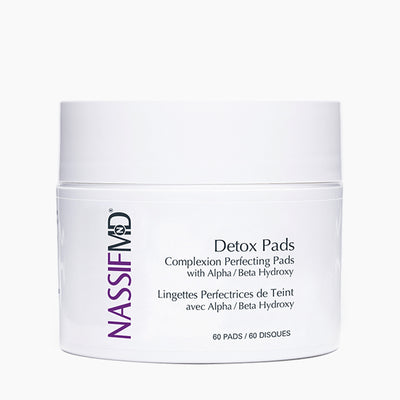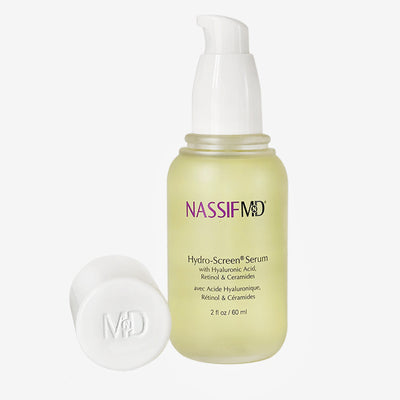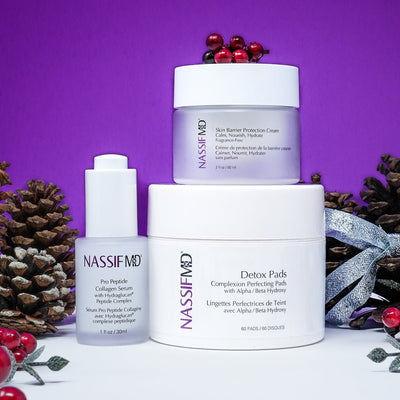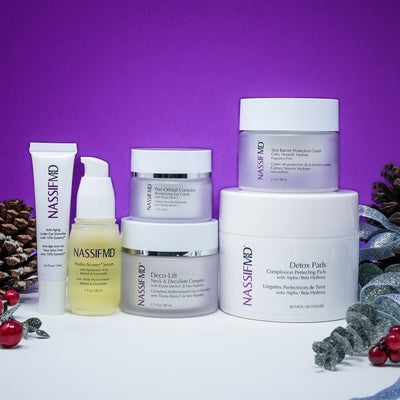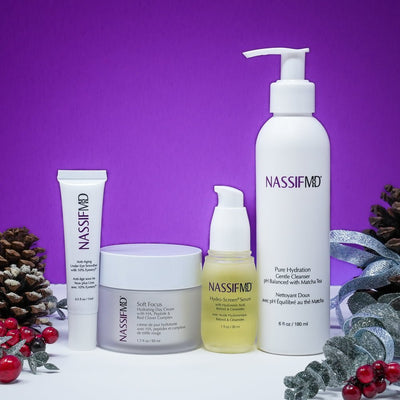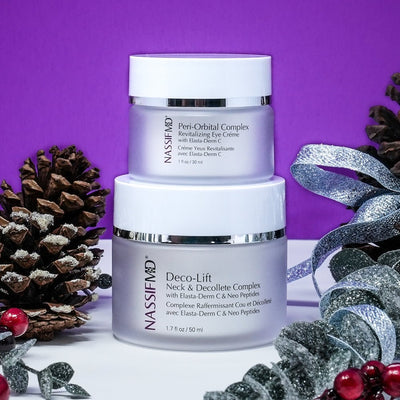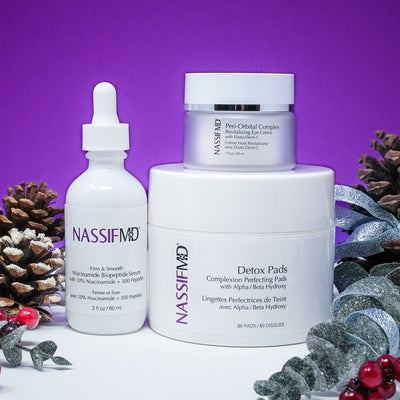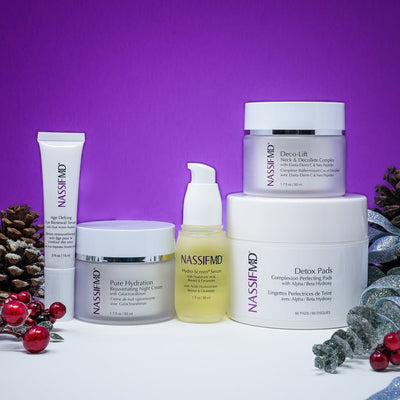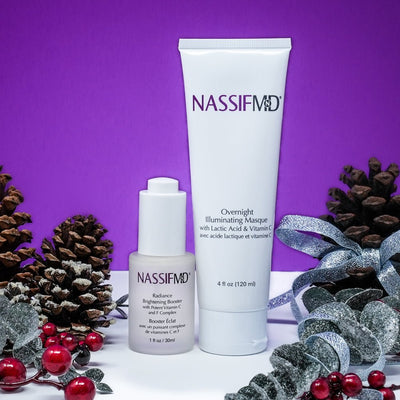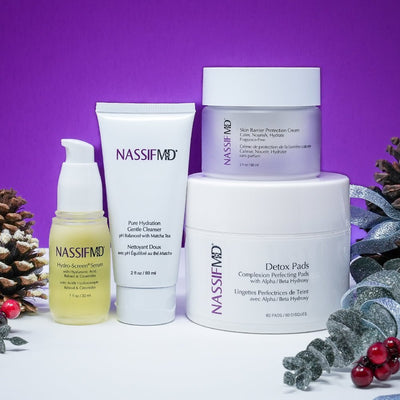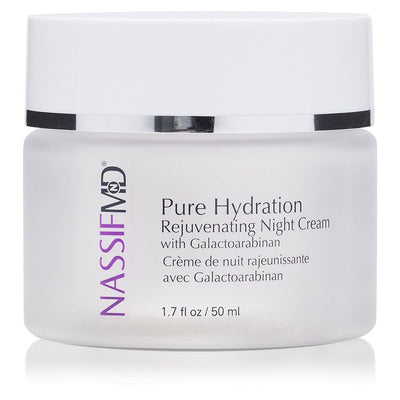Which Do You Apply First – Makeup or Sunscreen?
When it comes to essential beauty tools, sunscreen is at the top of the list. Sunscreen helps protect the skin from sun damage, aging, and cancer. It should be an essential part of your daily skincare routine. But are you using sunscreen correctly?
Today’s article will answer some of your most burning questions about best practices for sunscreen use, including:
- Why sunscreen is important
- Does sunscreen prevent wrinkles?
- What SPF sunscreen is best?
- What to avoid in sunscreen
- How often should you reapply sunscreen?
- Should you wear sunscreen inside?
- When to apply sunscreen in your skincare routine
- Why does my sunscreen pill?
- Does sunscreen go on before or after moisturizer?
- Do you put sunscreen on before or after makeup?
- Is foundation with SPF enough?
- How to reapply sunscreen over makeup
- What is the best sunscreen for your face?
Some of the answers are sure to surprise you. Let’s dive in!
Sun Exposure and Aging – Does Sunscreen Prevent Wrinkles?
The relationship between sun exposure and aging can explain many undesirable skin symptoms, including wrinkles. The sun emits blue light, including UVA and UVB rays that penetrate the ozone layer and reach the earth. Ultraviolet A (UVA) are longer waves (320-400nm), and UVB are shorter (280-320nm), but both affect skin health.
Most of the UV radiation from sun exposure are UVA rays, which penetrate the deep layers of the skin, causing oxidation and free radical damage. UVB rays represent about 5% of the sun that reaches earth; they don’t penetrate as deeply into the skin but can cause genetic mutations in the outer layers of the skin.
Not only does UV radiation cause sunburn, but it also suppresses the immune system, is carcinogenic, and contributes to aging.
Photoaging refers to skin aging due to sun exposure. It’s a gradual process that depends on the time spent in the sun and the intensity. Over time collagen protein degrades, damage to cell membranes occurs, and inflammation increases in the skin. Noticeable signs of photoaging include:
- Loose skin and loss of elasticity
- Fine lines
- Wrinkles
- Changes in pigmentation, including “age spots”
Want fewer wrinkles? Sun protection is so important!
What SPF Sunscreen is Best?
Sunscreens help prevent photoaging and slow the aging process, while also preventing skin cancer.
SPF stands for sun protection factor and refers to the effectiveness of sunscreen. The SPF rating on a product lets you know how long you can stay in the sun with that product without getting burned. A higher SPF number means you can stay in the sun longer. Experts recommend a minimum SPF of 30 for optimal skin protection. Of course, everyone is different, so it’s essential to know your skin and apply sunscreen correctly.
What to Avoid in Sunscreen
There are two main categories of sunscreens, physical and chemical. Physical sunscreens contain minerals, like zinc oxide and titanium dioxide, that sit on top of the skin and reflect light. Chemical sunscreens absorb into the skin and absorb UV light.
Some sunscreen ingredients may be harmful to human health and the health of the ocean environment. For example, Tinosorb S and M are ingredients banned in the United States. PABA is an active sunscreen ingredient banned in Europe and Canada.
It’s always a good idea to understand your product’s ingredients and any possible risks.
How Often Should You Reapply Sunscreen
It’s one thing to wear sunscreen, but it’s another to wear it appropriately for optimal protection. Data shows that most people don’t wear enough sunscreen to get the advertised protection. Using 2 milligrams of sunscreen per centimeter of skin is recommend, which translates to about a half teaspoon to cover your face.
In addition, frequent reapplication of sunscreen is necessary when you are in the sun. Experts suggest reapplying every 2 hours, give or take, based on your skin’s sensitivity to burning and the SPF you are using. In addition, mineral sunscreen tends to last longer than chemical options.
Should You Wear Sunscreen Inside?
A good rule of thumb is to wear sunscreen every day, even in the winter and on cloudy days, so you are protected when you go outside. Inside, when you are close to windows, you can still experience the harmful effects of UVA and UVB radiation, as glass doesn’t effectively block these rays.
When to Apply Sunscreen in Your Skincare Routine
We’ve talked about the importance of wearing enough sunscreen and reapplying, but what if you also use other skincare products and wear makeup? Should you layer sunscreen over or under makeup?
The simple answer is to use sunscreen as the last step in your morning skincare routine. If you are wearing sunscreen and makeup, put the sunscreen under makeup.
Does Sunscreen Go on Before or After Moisturizer?
Put on sunscreen after moisturizer if you are using both. You can also use a 2-in-1 product that offers hydration plus SPF protection, such as NassifMD® Protect & Hydrate Daily Mineral Sunscreen SPF 44.
Do You Put on Sunscreen Before or After Makeup?
Layering sunscreen and makeup is a good idea. Makeup won’t diminish the sun protection from your sunscreen. In fact, one study suggests that wearing both sunscreen and makeup enhances protection, as makeup acts as an additional filter for sunlight.
Apply sunscreen first and allow it to dry fully before gently applying makeup. If you apply makeup over wet sunscreen, the makeup can dilute the SPF effects. Think of sunscreen as a primer.
Layering Sunscreen and Makeup
When layering sunscreen and makeup, pilling might be a reason some people skip the sunscreen.
Sunscreen pilling occurs when sunscreen rubs or flakes off the skin and can be especially apparent when wearing makeup. Pilling typically occurs because of improper application or can be due to certain sunscreen ingredients.
To prevent pilling, start with a clean face and allow skincare products time to absorb. Allow sunscreen to dry completely before applying makeup.
Is Foundation with SPF Enough?
Using a foundation with SPF is an excellent idea in theory, but it may not provide enough protection in practice because you may need to be using more of it. You can undoubtedly layer SPF foundation over sunscreen for some extra protection.
An alternative is to use tinted sunscreen. The tint helps prevent the white appearance caused my many physical sunscreens. In this case, you may not need additional foundation but can certainly follow up with foundation application if desired.
How to Reapply Sunscreen Over Makeup
Most sunscreen is more effective when it’s close to the skin, and it’s better to apply sunscreen first, under makeup. However, reapplying sunscreen over makeup is better than not reapplying at all. Just note that when you reapply over makeup, you may not get the full SPF protection of the product and may want to choose the shade or wear a sun hat.
How to Pick the Right Sunscreen
We’ll make it easy for you and suggest our go-to sunscreen for year-round protection.
NassifMD® Protect & Hydrate Daily Mineral Sunscreen SPF 44 is lightweight, waterproof, and works brilliantly under makeup. It contains physical SPF from zinc oxide and titanium dioxide, vitamin C for antioxidant protection, and hyaluronic acid for hydration. In addition, it’s slightly tinted and works for all skin tones.
Don’t forget your lips! Sunscreen is vital for protecting your lips as well as your face. NassifMD® Hydrating Lip Balm protects the lips from UV rays and free radical damage. It contains nourishing oils from sunflower, soy, cannabis sativa, meadowfoam seed, mango seed, and jojoba. Apply as often as needed throughout the day. Plus, this balm works great under lipstick!
Spending time in the sun and wearing makeup can go together, especially when you know the best practices for applying sunscreen and choosing quality products. Don’t let your love for makeup deter you from sunscreen that will keep your skin looking young and healthy for years.
References
- Wang, M., Charareh, P., Lei, X., & Zhong, J. L. (2019). Autophagy: Multiple Mechanisms to Protect Skin from Ultraviolet Radiation-Driven Photoaging.Oxidative medicine and cellular longevity, 2019, 8135985.
- Matsumura, Y., & Ananthaswamy, H. N. (2004). Toxic effects of ultraviolet radiation on the skin.Toxicology and applied pharmacology, 195(3), 298–308.
- Gromkowska-Kępka, K. J., Puścion-Jakubik, A., Markiewicz-Żukowska, R., & Socha, K. (2021). The impact of ultraviolet radiation on skin photoaging - review of in vitro studies.Journal of cosmetic dermatology, 20(11), 3427–3431.
- Young, A. R., Claveau, J., & Rossi, A. B. (2017). Ultraviolet radiation and the skin: Photobiology and sunscreen photoprotection.Journal of the American Academy of Dermatology, 76(3S1), S100–S109.
- Petersen, B., & Wulf, H. C. (2014). Application of sunscreen--theory and reality.Photodermatology, photoimmunology & photomedicine, 30(2-3), 96–101.
- Kim, M. A., Jung, Y. C., Bae, J., Ha, J., & Kim, E. (2021). Layering sunscreen with facial makeup enhances its sun protection factor under real-use conditions. Skin research and technology : official journal of International Society for Bioengineering and the Skin (ISBS) [and] International Society for Digital Imaging of Skin (ISDIS) [and] International Society for Skin Imaging (ISSI), 27(5), 751–757.


